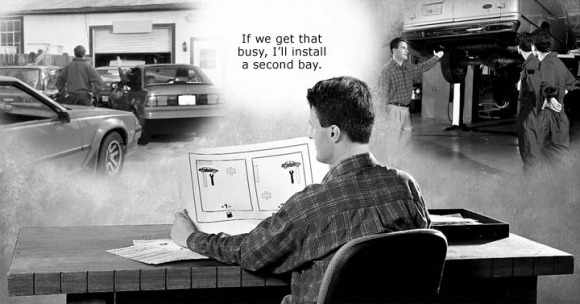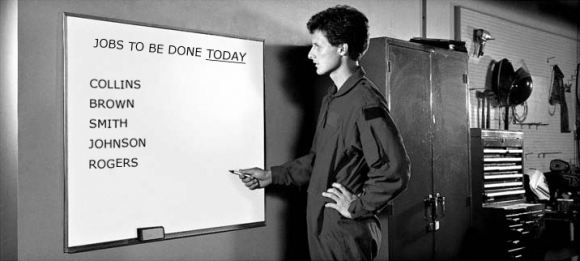There is, however, much to know of the techniques employed to draw up planning which will bring one’s dreams to realization. An initial step would be to comprehend the basic terms relating to the subject.
A plan is a description of the short-range broad intentions as to what one sees is required to handle a broad area. A plan would be expected to remedy non-optimum circumstances in an area or expand it or to obstruct or impede an opposition to expansion.
For a plan to be carried out requires it be broken down into the specific actions necessary to accomplish what the plan intends to do. This is done by use of a program.
A program is a series of steps in sequence to carry out a plan. To write a program requires that a plan exist beforehand, even if only in the mind of the person writing the program. A step of a program is called a target.
A program is composed of targets. A target is an action which should be undertaken in order to achieve a desired objective.
There are several values of targets. Not all targets are the same value or importance. Each of these is described below.
Major Target
A major target is the desirable overall ambition being undertaken. This is highly generalized, such as “to become a trained Scientology practitioner.”
Other examples in different fields would be:
“To get all machinery and equipment in the company operational.”
“To acquire, set up, make ready and use a suitable property and facilities at reasonable low cost.”
“To get books being distributed to mail order customers and any stores or distributors.”
Primary Targets
A primary target is one which deals with the organizational, personnel and communication-type steps that have to be kept in. These are a group of “understood” targets which, if overlooked, bring about inaction.
The first of these is: SOMEBODY THERE
Then: WORTHWHILE PURPOSE
Then: SOMEBODY TAKING RESPONSIBILITY FOR THE AREA OR ACTION
Then: FORM OF ORGANIZATION PLANNED WELL
Then: FORM OF ORGANIZATION HELD OR REESTABLISHED
Then: ORGANIZATION OPERATING
If we have the above “understood” targets, we can go on; but if these drop out or are not substituted for, then no matter what targets are set thereafter they will go
In the above there may be a continual necessity to reassert one or more of the “understood” targets WHILE trying to get further targets going.
Some examples of primary targets would be:
“Accept the job to which one is being assigned.”
“Read and understand the program which you will be doing.”
Vital Targets
A vital target is something that must be done to operate at all.
This requires an inspection of both the area one is operating into and the factors or
One then finds those points (sometimes while operating) which stop or threaten future successes. And sets the overcoming of the vital ones as targets.
Some examples of these would be:
“Look into the circumstances one is inspecting with your own eyes; don’t accept another’s report.”
“Accept no orders from anyone other than your direct senior.”
“Do not let the supply of books falter in the country while the campaign is ongoing.”
“Maintain a high level of ethical behavior and set an excellent example in doing so.”
Conditional Targets
A conditional target is one which is done to find out data, or if a project can be done, where it can be done, etc.
You’ve seen chaps work all their lives to “get rich” or some such thing in order to “tour the world” and never make it. Some other fellow sets “tour the world” and goes directly at it and does it. So there is a type of target known as a conditional target: If I could just _______ then we could _______ and so accomplish _______. This is all right of course until it gets unreal.
There is a whole class of conditional targets that have no IF in them. These are legitimate targets. They have lots of WILL in them, “We will _______ and then _______.”
Sometimes sudden “
A valid conditional target would be:
“We will go there and see if the area is useful.”
Another example of a conditional target is:
“If there is a backlog of filing, then organize a short time period each day where the company’s employees assist in filing the particles in the correct files.”
All conditional targets are basically actions of gathering data first, and if it is okay, then go into action.
Operating Targets
An operating target is one which would set the direction of advance and qualify it. It normally includes a scheduled time by which it has to be complete so as to fit into other targets.
Sometimes the time is set as “BEFORE.” And there may be no time for the event that it must be done “before.” Thus it goes into a rush basis “just in case.”
Examples of operating targets would be:
“Advertise books in local magazines which are subscribed to by the type of audience who would be interested in these books.”
“Hire local labor to make
“Establish how the company newsletter can be most inexpensively mailed to the branch offices.”
“Clean up the President’s
“Send a courier with the return mail direct to the home office.”
Production Targets
Setting quotas, usually against time, are production targets.
Examples of production targets would be:
“Next year’s tuition set aside by June.”
“Fifty thousand books bound by next month.”
As statistics most easily reflect production, an organization or activity can be so PRODUCTION TARGET conscious that it fails to set conditional, operating or primary targets. When this happens, then production is liable to collapse for lack of planning stated in other types of targets.
Production as the only target type can become so
YOU HAVE TO INSPECT AND SURVEY AND GATHER DATA AND SET OPERATING AND PRIMARY TARGETS BEFORE YOU CAN SET PRODUCTION TARGETS.
A normal reason for down statistics on production is the vanishment of primary targets. These go out and nobody notices that this affects production badly. Production depends on other prior targets being kept in.
The following is a concise summary of the different types of targets which make up a program.
TARGET TYPES |
|
| MAJOR TARGETS |
The broad general ambition,
possibly covering a long, only approximated period of time. Such as “To
attain greater security” or “To get the organization up to fifty
employees.” |
| PRIMARY TARGETS |
The organizational, personnel,
communication-type targets. These have to be kept in. These are the
type of targets which deal with the |
| VITAL TARGETS |
Those which must be done to operate at all, based on an inspection of the area in which one is operating. |
| CONDITIONAL TARGETS |
Those which set up EITHER/OR, to
find out data or if a project can be done or where or to whom. |
| OPERATING TARGETS |
Those which lay out directions
and actions or a schedule of events or timetable. |
| PRODUCTION TARGETS |
Those which set quantities like
statistics. |
liable to fall or break down because of being weak; shaky.
all the things that are used or needed in any business, undertaking or operation (distinguished from personnel).
chances, opportunities; pieces of good luck; advantages.
brick made from earth and straw and dried by the sun.
a group of rooms designed to be used together.
covering over or overwhelming, as if by overflowing and enclosing something.
anything that can receive, relay or send a communication. This term comes from the field of electronics where a terminal is one of two fixed points between which a flow of energy travels. An example of this is a car battery which has two connecting posts (terminals) where energy flows from one post to the other. In Scientology, two people communicating are called terminals because communication flows between them.








